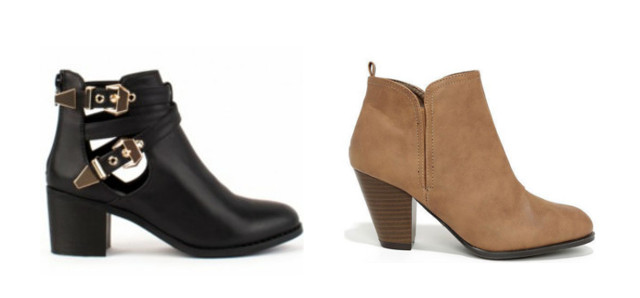
Now that I have a fast, always-on fibre internet connection, it is time to take the next step and get a smart TV. You know what I mean: a television set that can connect to the internet and stream all those series that everyone is talking about.
Being a methodical individual, I undertook some research and I am willing to share the results with you, so that you do not have to go through the whole process.
The price
I will not beat about the bush. When it comes to smart TVs, the logic is simple: the more you spend, the more you get. One can buy a respectable, decent-size full-HD smart TV for under R5000. However, I have set my eyes on a smart TV in the price range between R7,000 and R10,000, because that is where screens of decent size with Ultra HD are currently positioned. (I’ll explain later on about Ultra HD.)
The size
Those who know geometry say that a 65-inch TV has more than twice the screen real estate than a 42-inch TV, and I trust them. (It has something to do with screens being measured diagonally.) The general agreement among reviewers is that the sweet spot is between 55 and 65 inches, after taking into account the price, the performance and the typical living room. I was worried about my living room until I learned that with an Ultra HD the distance between the seats and the screen can be only 1.5 times the screen height. With an HD TV, that distance needs to be doubled.
Since a 65-inch would take me beyond my budget, I’ll have to settle for smaller screen… sigh!

LED, OLED or QLED?
The reviews are unanimous: both LED and OLED television sets are great. The latter are thinner and have better picture quality, but they are also more expensive; just look at the selection of OLED TVs on bidorbuy.
I am turning green with envy, but will settle for LED!
And in case you just have to know, here is a short history of TVs after the demise of the box-shaped sets: first there was the plasma technology (which no one uses anymore); then LCD (liquid crystal display) appeared; LCD / LED or just LED (light emitting diode; often also defined as backlit) followed; and finally came OLED (organic light emitting diode). As for QLED, that is just Samsung-talk for their line of high-end LED TVs.
Full HD, 4K and Ultra HD
This section is all about resolution, or the number of pixels on the screen. And yes, the more pixels, the better.
I plan to get an ultra high definition set, also called Ultra HD, UHDTV, UHD, Super Hi-Vision, or 4K. (Yes, in the television industry Ultra HD and 4K are one and the same thing.) Why? Because everyone out there says I should! “Don’t buy a TV with less than 4K resolution”, says one reviewer, “Go with 4K. Boom, done”, says another. Some concede that a Full HD will do as a small screen (about 32 inches) relegated to your bedroom or kitchen, but that’s about it. After all, it’s 2019!

Still not convinced? Here are the hard facts. The resolution of Ultra HD is 3840 x 2160, exactly four times higher than the resolution of Full HD. That means more detailed picture and a dramatically better viewing experience.
True, there is not all that much 4K content out there, but some providers of streaming services are working hard on it. Besides, an Ultra HD TV makes even HD content look better, thanks to up-scaling technologies that are able to increase the pixel density.
The next big thing is the 8K TV. These displays quadruple the resolution seen on 4K sets, but 8K is only for the very, very early adopters.
Must it be HDR?
Your (and my) 4k set will not be up to the notch without HDR (High Dynamic Range) in the mix! That is because HDR expands the colour volume and increases the contrast between the brightest whites and darkest blacks without any loss of detail. The result is a difference in picture quality you can easily see.

HDR is an upgrade of the 4K, or Ultra HD, and by all accounts worth it. Without HDR, some colours simply cannot be rendered on TV, for example (as one reviewer says) Prince’s purple guitar, Mountain Dew green, or a true strawberry red.
I am sold! A display that incorporates both 4K and HDR is what I want.
Other necessities
The beautifully thin screens of modern-day TV sets have one important shortcoming: they cannot render good sound. Therefore, I plan to get a soundbar, to be connected to the set via an HDMI cable.
Reviewers differ widely when it comes to the number of HDMI inputs we need. Some say one is enough. Others will have no less than three or four, because HDMI inputs can get used up quickly: add a soundbar, Blu-ray player, gaming console, your laptop… You get the picture. To future-proof the set, it’s a good idea to get ports that support HDMI 2.0, to accommodate future Ultra HD sources.
Everyone also recommends checking for HDCP compatibility. The abbreviation stands for high-bandwidth digital content protection. If lacking, it can give you nasty surprises such as refusing to display content form, for example, compliant Blu-ray player to non-compliant TV set.
But is it even a TV?
The answer to this question proved to be the most elusive. Only after searching high and low I managed to ascertain that the majority of smart TVs do not have a tuner. For most of us, that is not a problem. We do not need a TV tuner because we stream series and movies, or watch live TV via cable or satellite boxes.

If you use an external antenna to watch free local channels, you will need to get a separate tuner adapter to connect your antenna to your tuner-free screen. And if you are really set on a smart TV with a TV tuner, look for a set with an antenna or cable connection, usually referred to as an RF connector. If it is not there, the device probably does not have a tuner.
Of course, when buying a smart (or any other) TV with a tuner, you need to produce a TV licence. As for me, I’ll happily forgo the tuner!
So, after all that research, I have narrowed down my smart TV shopping strategy to these non-negotiable specs: about 55” big HDCP compatible LED screen with Ultra HD and HDR and at least two (or three) HDMI inputs.
Luckily for me, there is quite a mouth-watering selection of my preferred smart TVs in my price range on bidorbuy! Once again, here’s the link to smart TVs in the price range between R7,000 and R10,000. Remember, one of them is mine!









